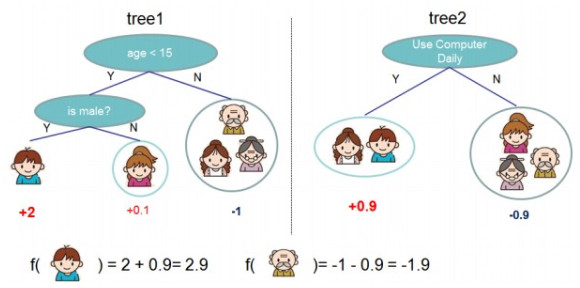| [1] |
Murdoch TB, Detsky AS. The inevitable application of big data to health care[J]. JAMA, 2013, 309(13): 1351-2. doi: 10.1001/jama.2013.393
|
| [2] |
Merelli I, Pérez-Sánchez H, Gesing S, et al. Managing, analysing, and integrating big data in medical bioinformatics: open problems and future perspectives[J]. Biomed Res Int, 2014, 2014: 134023.
|
| [3] |
Raghupathi W, Raghupathi V. Big data analytics in healthcare: promise and potential[J]. Health Inf Sci Syst, 2014, 2: 3. doi: 10.1186/2047-2501-2-3
|
| [4] |
Shavlik JW. Readings in Machine Learning[M]. Los Altos, CA: Morgan Kaufmann, 1990.
|
| [5] |
Michalski RS, Bratko I, Kubat M. Machine learning, data mining and knowledge discovery: methods and applications[M]. New York: Wiley, 1998.
|
| [6] |
Jordan MI, Mitchell TM. Machine learning: Trends, perspectives, and prospects[J]. Science, 2015, 349(6245): 255-60. doi: 10.1126/science.aaa8415
|
| [7] |
Altman RB. Artificial intelligence (AI) systems for interpreting complex medical datasets[J]. Clin Pharmacol Ther, 2017, 101(5): 585-6. doi: 10.1002/cpt.650
|
| [8] |
Sun Y, Todorovic S, Goodison S. Local-learning-based feature selection for high-dimensional data analysis[J]. IEEE Trans Pattern Anal Mach Intell, 2010, 32(9): 1610-26. doi: 10.1109/TPAMI.2009.190
|
| [9] |
Chen TQ, Guestrin C. XGBoost: a scalable tree boosting system[C]// Proceedings of the 22nd ACM SIGKDD International Conference on Knowledge Discovery and Data Mining. San Francisco California USA. New York, NY, USA: ACM, 2016: 785-94.
|
| [10] |
Cios KJ, William Moore G. Uniqueness of medical data mining[J]. Artif Intell Med, 2002, 26(1/2): 1-24. http://www.ncbi.nlm.nih.gov/pubmed/12234714
|
| [11] |
Bellazzi R, Zupan B. Predictive data mining in clinical medicine: current issues and guidelines[J]. Int J Med Inform, 2008, 77(2): 81-97. doi: 10.1016/j.ijmedinf.2006.11.006
|
| [12] |
Zhang X, Yan C, Gao C, et al. Predicting missing values in medical data via XGBoost regression[J]. J Healthc Inform Res, 2020, 4(4): 383-94. doi: 10.1007/s41666-020-00077-1
|
| [13] |
Newgard CD, Lewis RJ. Missing data: how to best account for what is not known[J]. JAMA, 2015, 314(9): 940-1. doi: 10.1001/jama.2015.10516
|
| [14] |
Luo Y, Szolovits P, Dighe AS, et al. 3D-MICE: integration of cross-sectional and longitudinal imputation for multi-analyte longitudinal clinical data[J]. J Am Med Inform Assoc, 2018, 25(6): 645-53. doi: 10.1093/jamia/ocx133
|
| [15] |
Cismondi F, Fialho AS, Vieira SM, et al. Missing data in medical databases: impute, delete or classify?[J]. Artif Intell Med, 2013, 58 (1): 63-72. doi: 10.1016/j.artmed.2013.01.003
|
| [16] |
Torlay L, Perrone-Bertolotti M, Thomas E, et al. Machine learning-XGBoost analysis of language networks to classify patients with epilepsy[J]. Brain Inform, 2017, 4(3): 159-69. doi: 10.1007/s40708-017-0065-7
|
| [17] |
Nishio M, Nishizawa M, Sugiyama O, et al. Computer-aided diagnosis of lung nodule using gradient tree boosting and Bayesian optimization[J]. PLoS One, 2018, 13(4): 195875. http://arxiv.org/ftp/arxiv/papers/1708/1708.05897.pdf
|
| [18] |
Taylor RA, Moore CL, Cheung KH, et al. Predicting urinary tract infections in the emergency department with machine learning[J]. PLoS One, 2018, 13(3): e0194085. doi: 10.1371/journal.pone.0194085
|
| [19] |
Maass F, Michalke B, Leha A, et al. Elemental fingerprint as a cerebrospinal fluid biomarker for the diagnosis of Parkinson's disease[J]. J Neurochem, 2018, 145(4): 342-51. doi: 10.1111/jnc.14316
|
| [20] |
Yu DP, Liu ZD, Su CY, et al. Copy number variation in plasma as a tool for lung cancer prediction using Extreme Gradient Boosting (XGBoost) classifier[J]. Thorac Cancer, 2020, 11(1): 95-102. doi: 10.1111/1759-7714.13204
|
| [21] |
Ye C, Fu T, Hao S, et al. Prediction of incident hypertension within the next year: prospective study using statewide electronic health records and machine learning[J]. J Med Internet Res, 2018, 20(1): e22. doi: 10.2196/jmir.9268
|
| [22] |
Chen X, Huang L, Xie D, et al. EGBMMDA: extreme gradient boosting machine for MiRNA-disease association prediction[J]. Cell Death Dis, 2018, 9(1): 3. doi: 10.1038/s41419-017-0003-x
|
| [23] |
Trakadis YJ, Sardaar S, Chen A, et al. Machine learning in schizophrenia genomics, a case-control study using 5, 090 exomes[J]. Am J Med Genet, 2019, 180(2): 103-12. doi: 10.1002/ajmg.b.32638
|
| [24] |
van Rosendael AR, Maliakal G, Kolli KK, et al. Maximization of the usage of coronary CTA derived plaque information using a machine learning based algorithm to improve risk stratification; insights from the CONFIRM registry[J]. J Cardiovasc Comput Tomogr, 2018, 12(3): 204-9. doi: 10.1016/j.jcct.2018.04.011
|
| [25] |
Livne M, Boldsen JK, Mikkelsen IK, et al. Boosted tree model reforms multimodal magnetic resonance imaging infarct prediction in acute stroke[J]. Stroke, 2018, 49(4): 912-8. doi: 10.1161/STROKEAHA.117.019440
|
| [26] |
Donovan FO, Brecht T, Kekeh C, et al. Machine learning generated risk model to predict unplanned hospital admission in heart failure[J]. Circulation, 2018, 1(1): 136-42. http://3b2dgy3hpb1t33upat2k0467-wpengine.netdna-ssl.com/wp-content/uploads/2017/11/AHA-HF-admit-poster-40x84.pdf
|
| [27] |
Zhou F, Li TF, Li H, et al. TPCNN: two-phase patch-based convolutional neural network for automatic brain tumor segmentation and survival prediction[C]//Brainlesion: Glioma Mult Scler Stroke Trauma Brain Inj, 2018. DOI: 10.1007/978-3-319-75238-9_24.
|
| [28] |
Gao C, Sun H, Wang T, et al. Model-based and model-free machine learning techniques for diagnostic prediction and classification of clinical outcomes in Parkinson's disease[J]. Sci Rep, 2018, 8(1): 7129. doi: 10.1038/s41598-018-24783-4
|
| [29] |
Li ZZ, Yuan L, Zhang C, et al. A novel prognostic scoring system of intrahepatic cholangiocarcinoma with machine learning basing on real-world data[J]. Front Oncol, 2021, 10: 576901. doi: 10.3389/fonc.2020.576901
|
| [30] |
Liu L, Yu Y, Fei Z, et al. An interpretable boosting model to predict side effects of analgesics for osteoarthritis[J]. BMC Syst Biol, 2018, 12(suppl 6): 105. doi: 10.1186%2Fs12918-018-0624-4.pdf
|
| [31] |
Mo X, Chen X, Ieong C, et al. Early prediction of clinical response to etanercept treatment in juvenile idiopathic arthritis using machine learning[J]. Front Pharmacol, 2020, 21(4): 1164-75. http://www.researchgate.net/publication/343338927_Early_Prediction_of_Clinical_Response_to_Etanercept_Treatment_in_Juvenile_Idiopathic_Arthritis_Using_Machine_Learning
|
| [32] |
Hatmal MM, Al-Hatamleh MAI, Olaimat AN, et al. Side effects and perceptions following COVID-19 vaccination in Jordan: a randomized, cross-sectional study implementing machine learning for predicting severity of side effects[J]. Vaccines, 2021, 9(6): 556. doi: 10.3390/vaccines9060556
|
| [33] |
Kan JT, Li A, Zou H, et al. A machine learning based dose prediction of lutein supplements for individuals with eye fatigue[J]. Front Nutr, 2020, 7: 577923. doi: 10.3389/fnut.2020.577923
|
| [34] |
Huang X, Yu Z, Wei X, et al. Prediction of vancomycin dose on high-dimensional data using machine learning techniques[J]. Expert Rev Clin Pharmacol, 2021, 14(6): 761-71. doi: 10.1080/17512433.2021.1911642
|
| [35] |
Huang X, Yu Z, Bu S, et al. An ensemble model for prediction of vancomycin trough concentrations in pediatric patients[J]. Drug Des Devel Ther, 2021, 15: 1549-59. doi: 10.2147/DDDT.S299037
|
| [36] |
Mamada H, Iwamoto K, Nomura Y, et al. Predicting blood-to-plasma concentration ratios of drugs from chemical structures and volumes of distribution in humans[J]. Mol Divers, 2021, 25(3): 1261-70. doi: 10.1007/s11030-021-10186-7
|
| [37] |
Nguyen M, Brettin T, Long SW, et al. Developing an in silico minimum inhibitory concentration panel test for Klebsiella pneumonia[J]. Sci Rep, 2018, 8(1): 421-6. doi: 10.1038/s41598-017-18972-w
|
| [38] |
Cui W, Bachi K, Hurd Y, et al. Using big data to predict outcomes of opioid treatment programs[J]. Stud Health Technol Inform, 2020, 272: 366-9.
|
| [39] |
Sidorov P, Naulaerts S, Ariey-Bonnet J, et al. Predicting synergism of cancer drug combinations using NCI-ALMANAC data[J]. Front Chem, 2019, 7: 509. doi: 10.3389/fchem.2019.00509
|
| [40] |
Wacker S, Noskov SY. Performance of machine learning algorithms for qualitative and quantitative prediction drug blockade of hERG1 channel[J]. Comput Toxicol, 2018, 6: 55-63. doi: 10.1016/j.comtox.2017.05.001
|
| [41] |
Babajide Mustapha I, Saeed F. Bioactive molecule prediction using extreme gradient boosting[J]. Molecules, 2016, 21(8): 983. doi: 10.3390/molecules21080983
|
| [42] |
Lu J, Chen M, Qin Y. Drug-induced cell viability prediction from LINCS-L1000 through WRFEN-XGBoost algorithm[J]. BMC Bioinformatics, 2021, 22(1): 13. doi: 10.1186/s12859-020-03949-w
|
| [43] |
Zhong JC, Sun YS, Peng W, et al. XGBFEMF: an XGBoost-based framework for essential protein prediction[J]. IEEE Trans Nanobioscience, 2018, 17(3): 243-50. doi: 10.1109/TNB.2018.2842219
|
| [44] |
Yu B, Qiu W, Chen C, et al. SubMito-XGBoost: predicting protein submitochondrial localization by fusing multiple feature information and eXtreme gradient boosting[J]. Bioinformatics, 2020, 36(4): 1074-81. doi: 10.1093/bioinformatics/btz734
|
| [45] |
Kaushal R, Shojania KG, Bates DW. Effects of computerized physician order entry and clinical decision support systems on medication safety: a systematic review[J]. Arch Intern Med, 2003, 163(12): 1409-16. doi: 10.1001/archinte.163.12.1409
|
| [46] |
Mishra AK, Keserwani PK, Samaddar SG, et al. A decision support system in healthcare prediction[M]//Lecture Notes in Electrical Engineering. Singapore: Springer Singapore, 2018: 156-67.
|
| [47] |
Fitriyani NL, Syafrudin M, Alfian G, et al. HDPM: an effective heart disease prediction model for a clinical decision support system[J]. IEEE Access, 2020, 8: 133034-50. doi: 10.1109/ACCESS.2020.3010511
|
| [48] |
Mo XL, Chen XJ, Li HW, et al. Early and accurate prediction of clinical response to methotrexate treatment in juvenile idiopathic arthritis using machine learning[J]. Front Pharmacol, 2019, 10: 1155. doi: 10.3389/fphar.2019.01155
|
| [49] |
Hou N, Li M, He L, et al. Predicting 30-days mortality for MIMIC-Ⅲ patients with Sepsis-3: a machine learning approach using XGboost[J]. J Transl Med, 2020, 18(1): 462. doi: 10.1186/s12967-020-02620-5
|







 下载:
下载:


